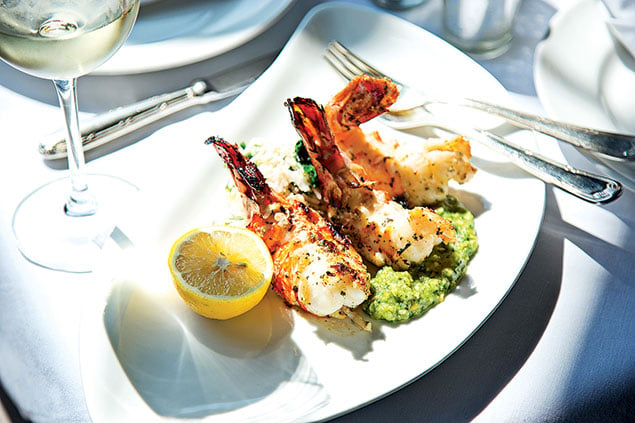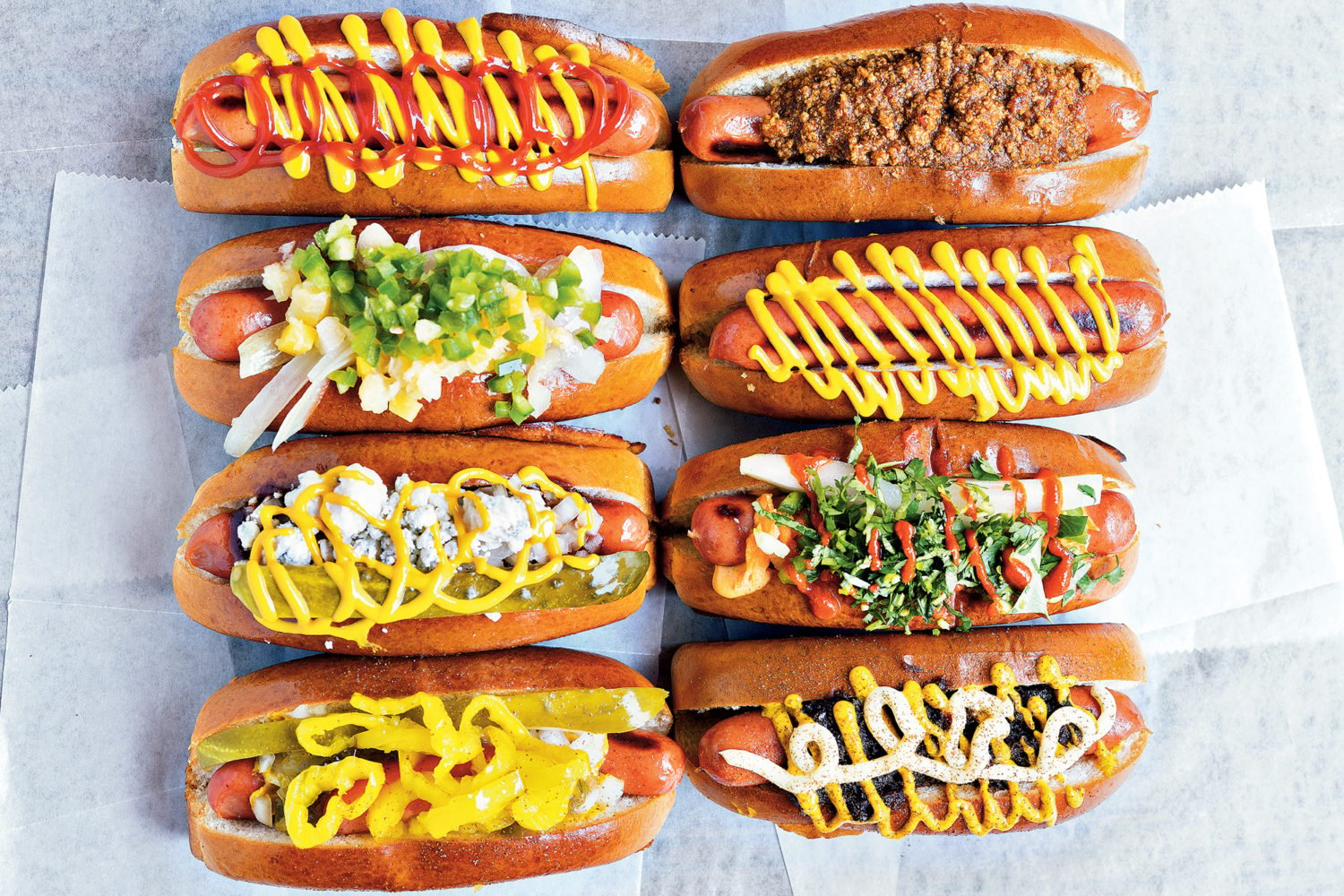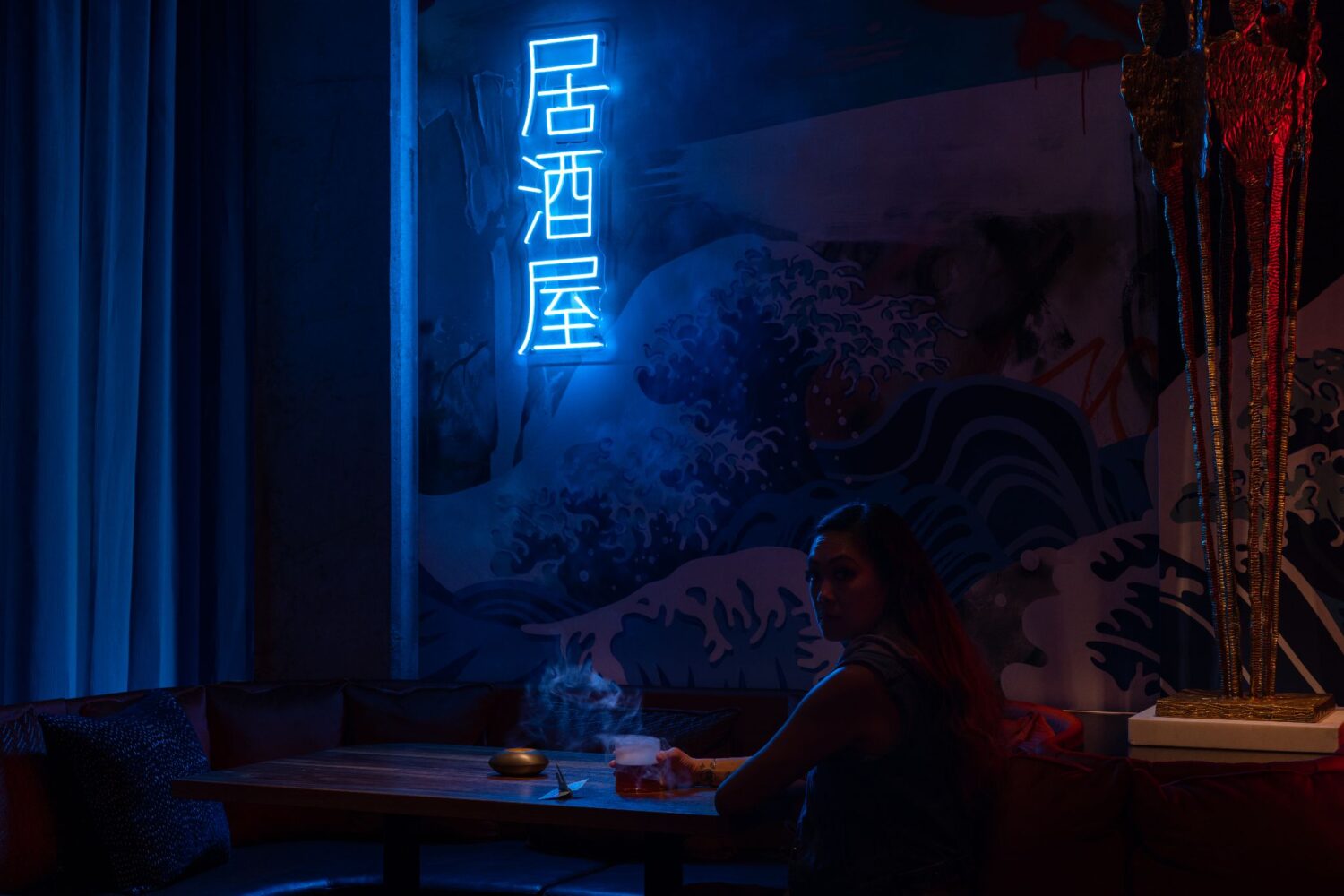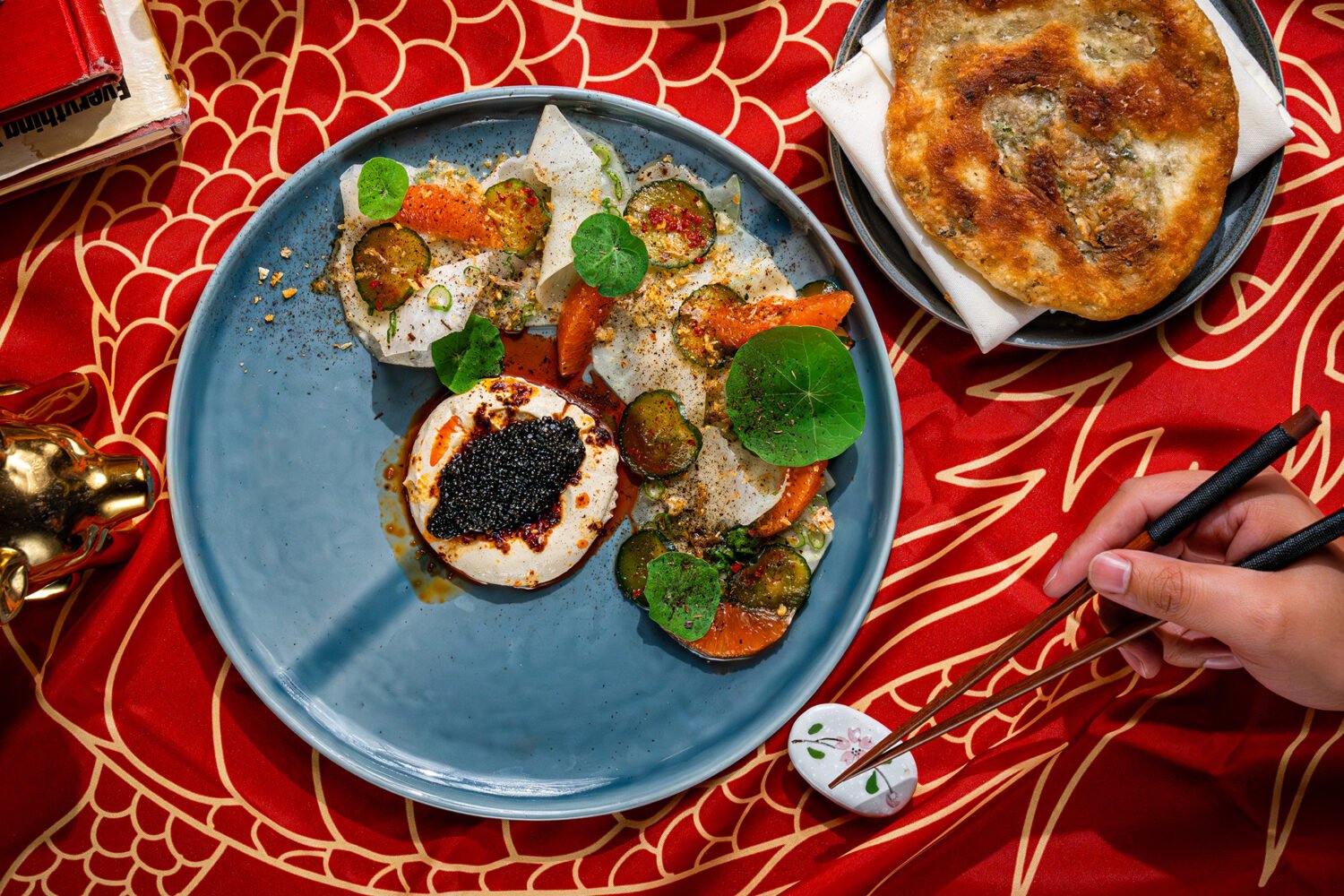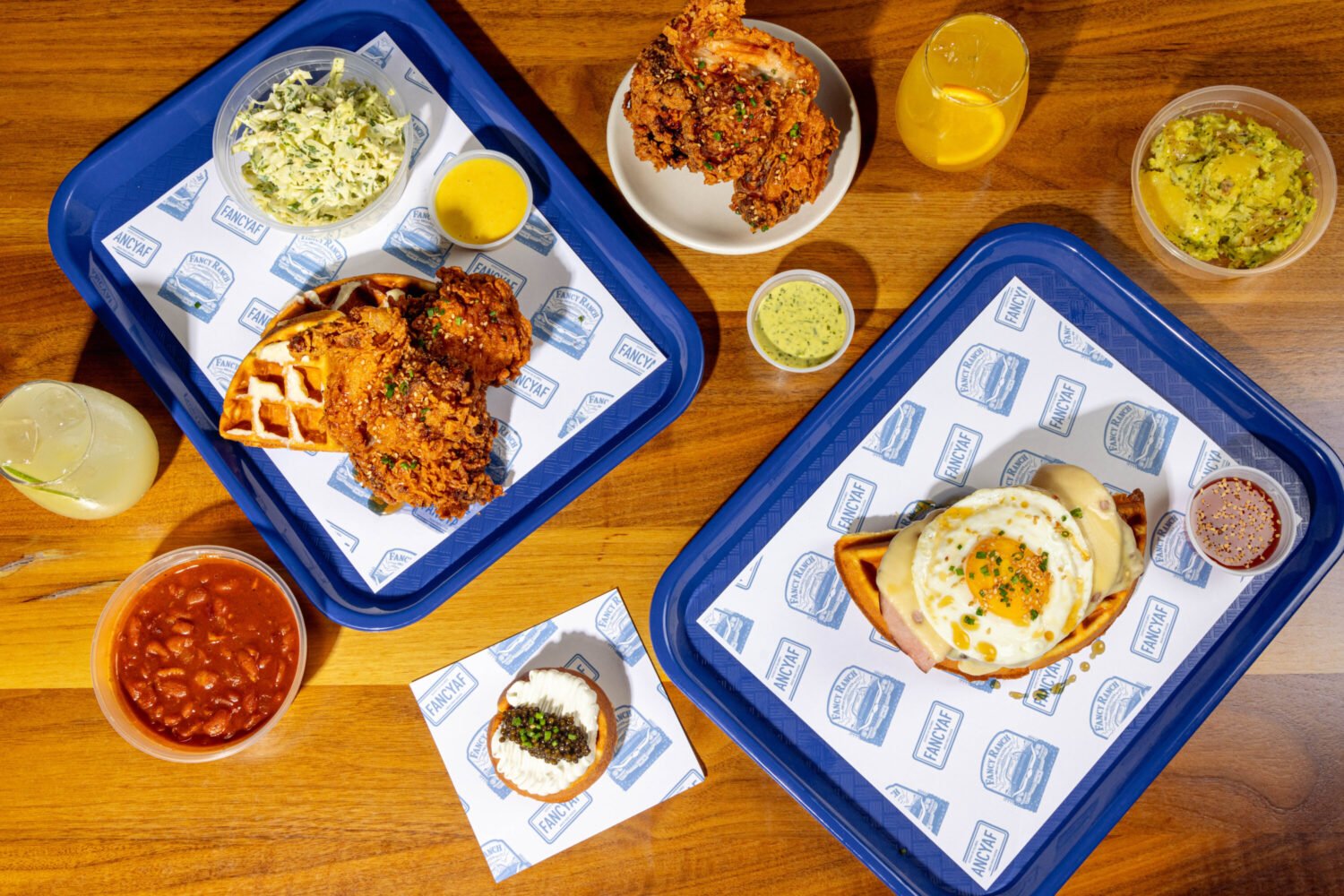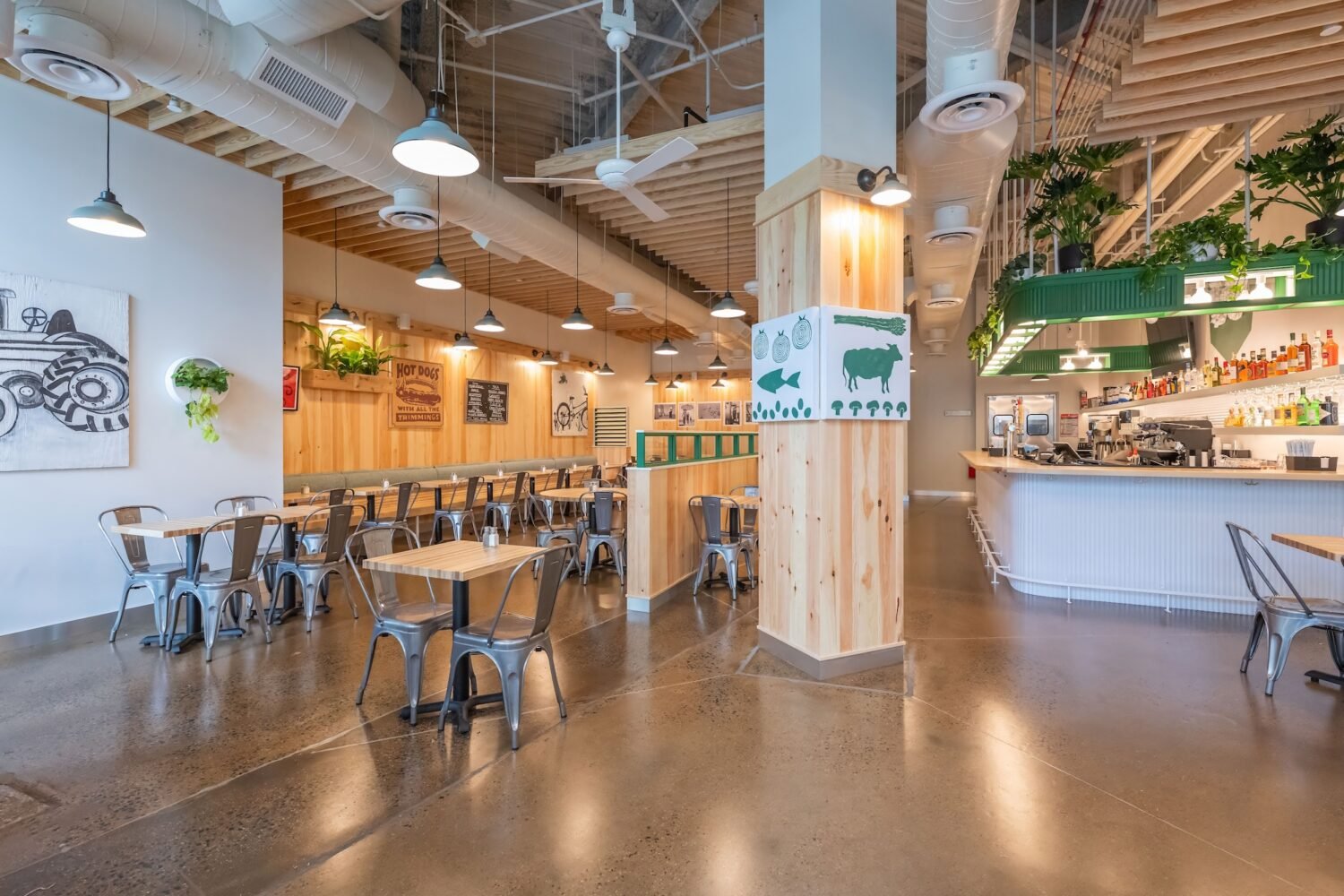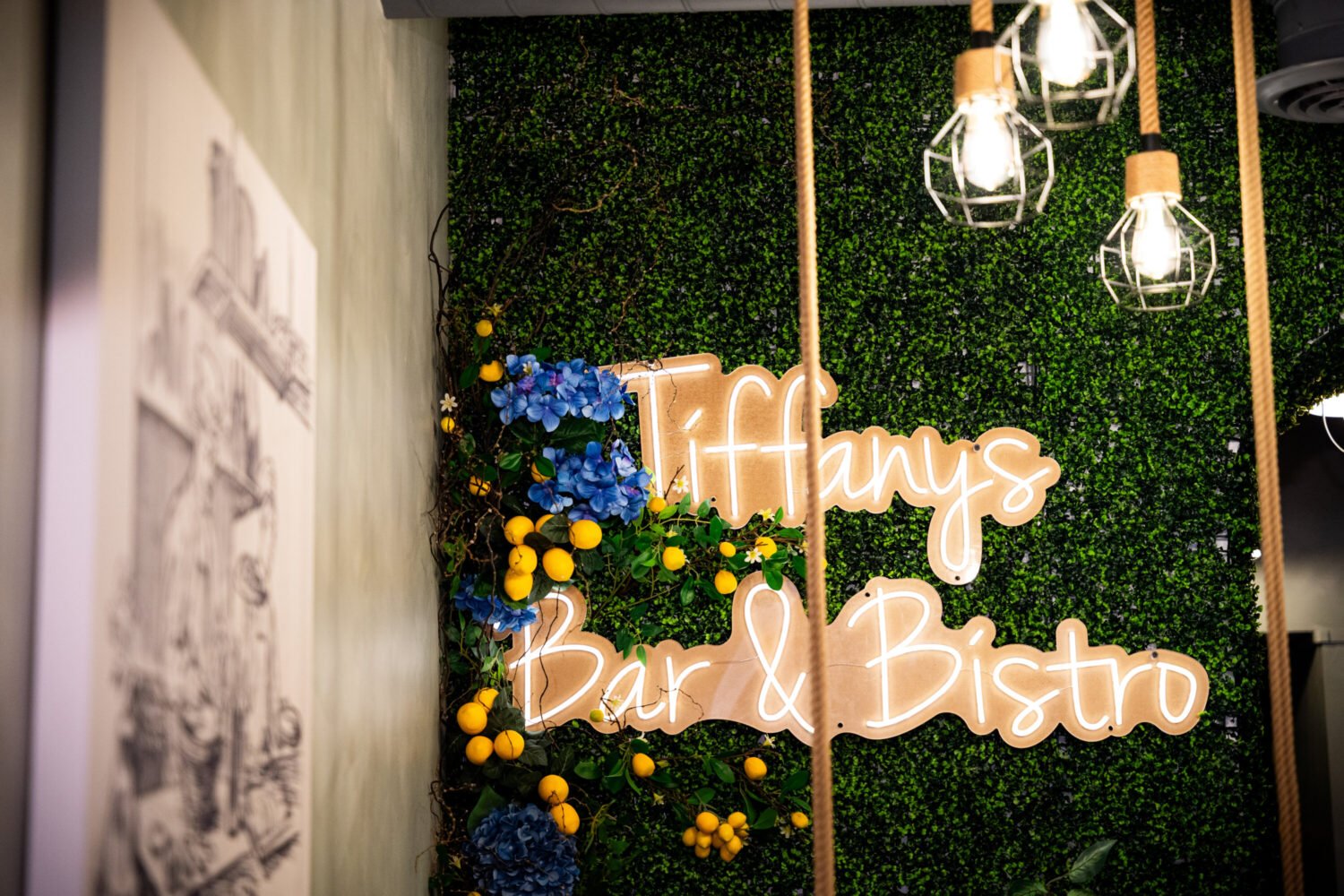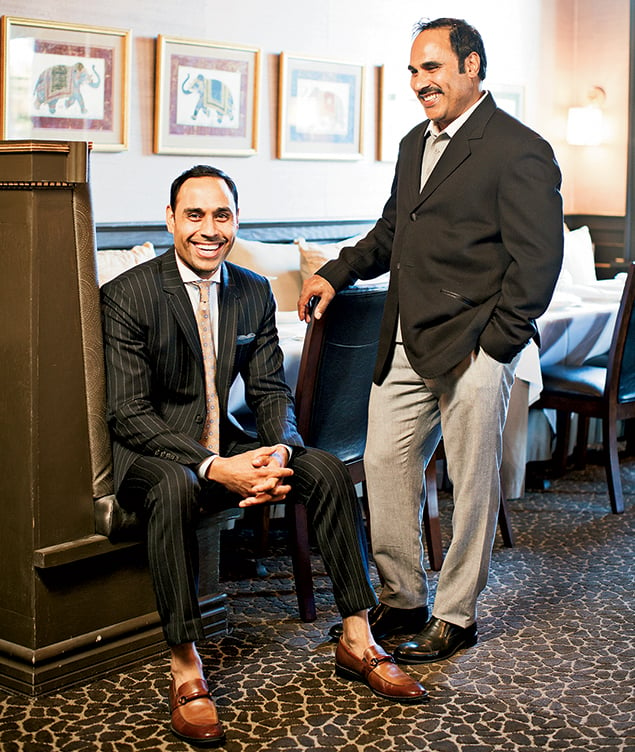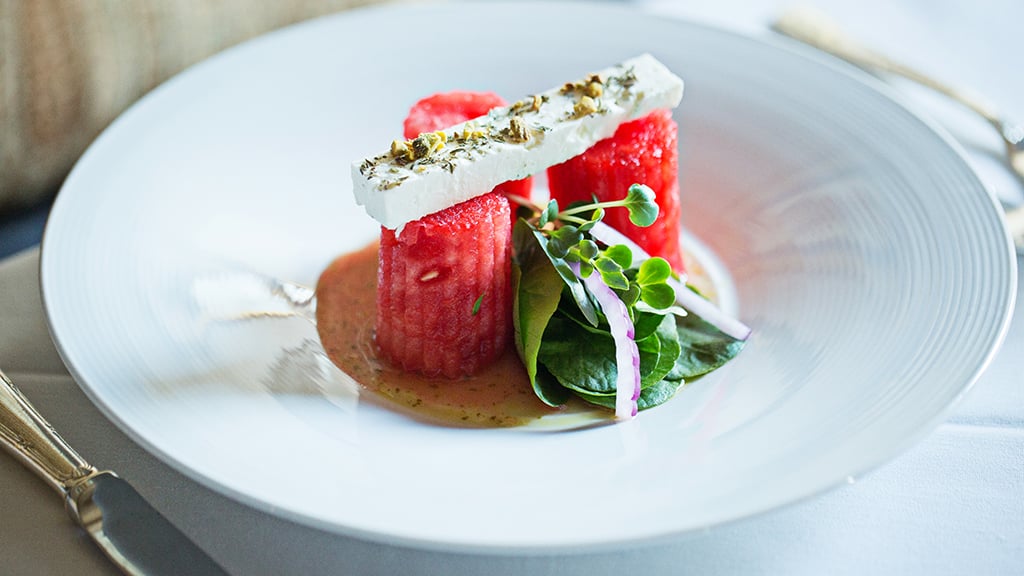About Ananda
I’d just booked my reservation and was about to hang up when the man on the phone stopped me.
“Sir? You might have trouble locating us.”
“Why’s that” I asked.
“Well, there’s no sign out front,” he said. “And we really don’t look like a restaurant.”
“What do you look like?”
“Like a castle,” he said.
“A castle?”
“Or a bank.”
I briefly imagined the worst of this bank/castle: some odd, ill-conceived operation laboring under delusions of grandeur. At least I’m in for a night of adventure, I thought as I went about rounding up friends and family to celebrate my sister-in-law’s birthday.
Winding our way through the sprawling Maple Lawn development in Fulton, Maryland, one late Saturday afternoon, I slowed the car as we came upon a massive edifice without any identifying letters.
“This can’t be it,” someone said. “It looks like a bank.”
“Or maybe a castle?” I asked.
“Yeah, you know? That, too.”
“We’re here!”
The birthday girl, having accompanied me on far-flung excursions to all manner of restaurants—some good, many bad, not a few ridiculous—wore a look of smirking skepticism as she walked through the parking lot.
Then she opened the door. “Oh, my.”
This was a lair, sumptuously appointed, dazzling in effect, and as far from the bland impersonality of the suburban big box as, well, as a castle is from a bank.
Behind the host stand was the bar, a place of dark-lit transport where you could imagine retreating to sip small-batch gins and dispatch the cares of the day. To the right, the dining room summoned some designer’s romanticized idea of a library, the kind you don’t so much read in as imagine you’re reading in: dark wood trim, floor-to-ceiling bookcases, plush leather seats, three fireplaces. As this was a temperate night, we were directed toward a high-ceilinged patio with open roll-top windows looking onto a grove of trees. There were three fireplaces here, too.
“Who builds restaurants like this anymore?” I wondered aloud.
Nearby was the general manager, who wore an immaculately tailored rose-colored suit and a smile of serene confidence.
That assurance, that quiet command, permeates the operation, from the tables laid with crisp white cloths to the servers, who wear ties and vests and are given to answering questions with a hearty “Of course, sir.” At a time when so many places are scaling back on the niceties, it’s refreshing, and a little disorienting, to spend time in a restaurant that wants so badly to pamper you.
The greater surprise comes when the food hits the table. Anyone who has eaten at an upscale American restaurant in the past few years will be familiar with the constituent parts of the watermelon salad (fruit, feta, baby greens), but those ingredients are given a fresh spin with a dash of crushed coriander and a drizzle of chili oil. In the early going, the dessert special was a peach crumble, and it would be hard to imagine something so satisfying being so light—or should that be something so light being so satisfying? The owners manage a small farm not far from the restaurant, and you can taste the literal fruit of their labors in an elegant squash soup.
If you’re thinking, “Yeah, so? Don’t a lot of restaurants use products from local farms?,” allow me to share a crucial piece of information: Ananda is an Indian restaurant.
When have you heard of an Indian restaurant name-checking the farm that supplies the blue cheese for its arugula salad? For that matter, when have you heard of an Indian restaurant serving an arugula salad with blue cheese?
Comparisons with Rasika, the widely celebrated pair of DC restaurants, are inevitable. But Ananda, the third restaurant from brothers Keir and Binda Singh (they opened the other two in Baltimore, one since closed), isn’t out to demonstrate that Indian cooking can be made chic. Yes, it too turns gravies into sauces and dispenses with family-style plating in favor of single portions. But its aim is simpler—and more daring. It wants to take the Indian restaurant you think you know and show you that with some upgrades to raw materials, an emphasis on eschewing excess butter and yogurt, and a commitment to precision at the stove, it can play at the level of an ambitious American bistro.
The bulk of the menu doesn’t look so different from most good Indian restaurants—at least on paper. Like so much else about Ananda, you have to make the discovery.
The samosas are without peer—the light, flaky pastries they’re meant to be. The lamb saag, a stew of meat and spinach, forgoes the frozen stuff that most places use in favor of fresh leaves, and the difference is unmistakable—brighter and more delicate than you expect. Unlike at the majority of Indian restaurants, where you find yourself sawing through dry hunks of lamb or chicken, the meat here is an equal partner.
Likewise, the shrimp in the jingha karari are poached just past the point of translucence and pop when you bite into them. Still, the reason you’ll keep eating long after you’re sated is the marvelously vibrant gravy, shot through with ginger and chilies and given a softening glug of coconut milk.
If there’s a showpiece dish, it’s a characteristically unassuming one: almond-crusted baby lamb chops, their bones as white as china. The night I ordered them, they were beautifully seasoned and grilled to a perfect, pink-centered medium, and neither the masala sauce nor the vivid mint chutney was necessary; both were deliciously extraneous.
The kitchen, under the direction of Kinday Kaur and Jarnail Singh, doesn’t err often, but when it does it’s generally not a problem of execution—it’s a matter of conceit, as if the attempt to demonstrate the broad appeal of a modern Indian restaurant means that spice must be handled with restraint. I wanted more punch from my chicken vindaloo, a dish known for its heat (although the vinegary tang is wonderfully unexpected). The same was true of both the malai kofta(vegetable croquettes) and the chicken korma, in which cubes of tender white meat are submerged in almond gravy. Each of these dishes skews bland as it is, but the kitchen has contrived to turn them into something almost soothing, with all the oomph of porridge.
If you’re a non-Indian and ask for recommendations, be prepared to be guided to safe harbor like chicken tikka masala, the lushly creamy dish even spice-phobes can’t resist, or the crabcakes, lightly bound to emphasize the meat’s quality, then given just enough spicing to remind you you’re eating Indian food. The Singhs need to do a better job of teaching the doting staff to read tables: Some like it hot.
It would help to know as well that a glass of the Grüner Veltliner (or half glass, a smart move on the part of the brothers, who have put together a very good wine list) pairs well with nearly every appetizer and seafood dish.
Also to know that your experience can be improved immeasurably by adding a couple of dishes that ought to be considered essential—the black dal, a lentil stew of surpassing refinement, and the raita, a rich yogurt that here transcends its status as mere condiment. And no table should be without at least one preparation of vegetables, which are handled with such care that it’s tempting to think of them as holy offerings. If it can be only one, make it the bhindi pyaaz, the rare okra dish that’s neither undercooked and crunchy nor overcooked and slimy.
The fruit crumble is a good way to end the meal. But you could also just order a glass of port and settle in, feeling the warmth of the fire and reveling in the pleasures that descend upon you after a pampering meal that restores your senses.
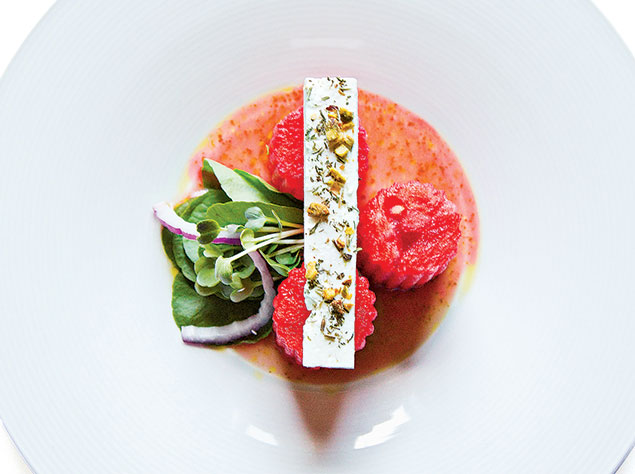
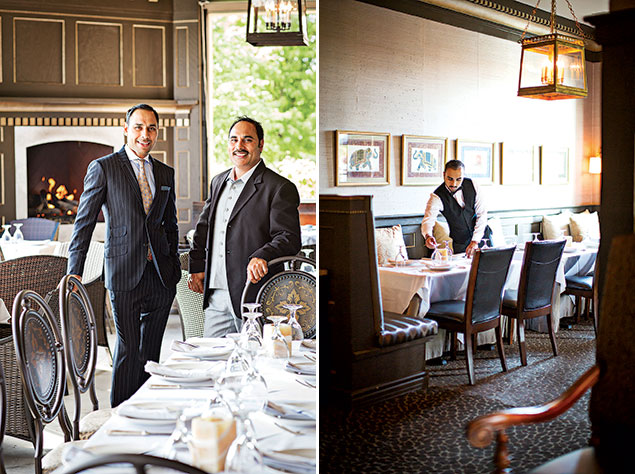
This article appears in the November 2014 issue of Washingtonian.

